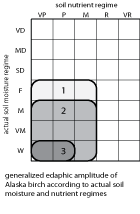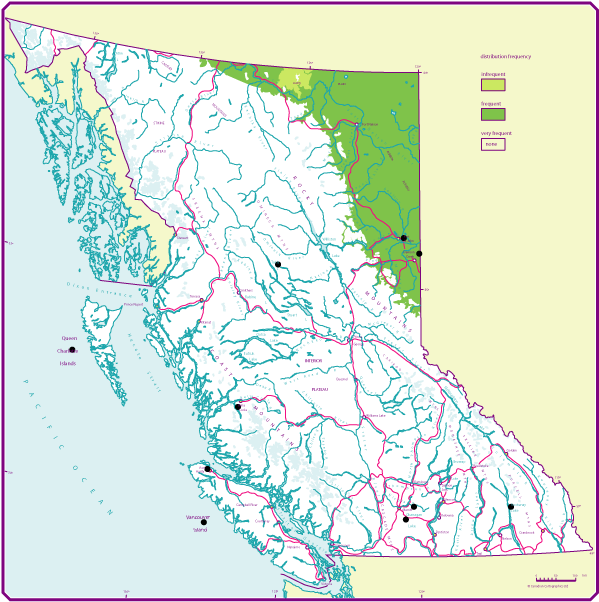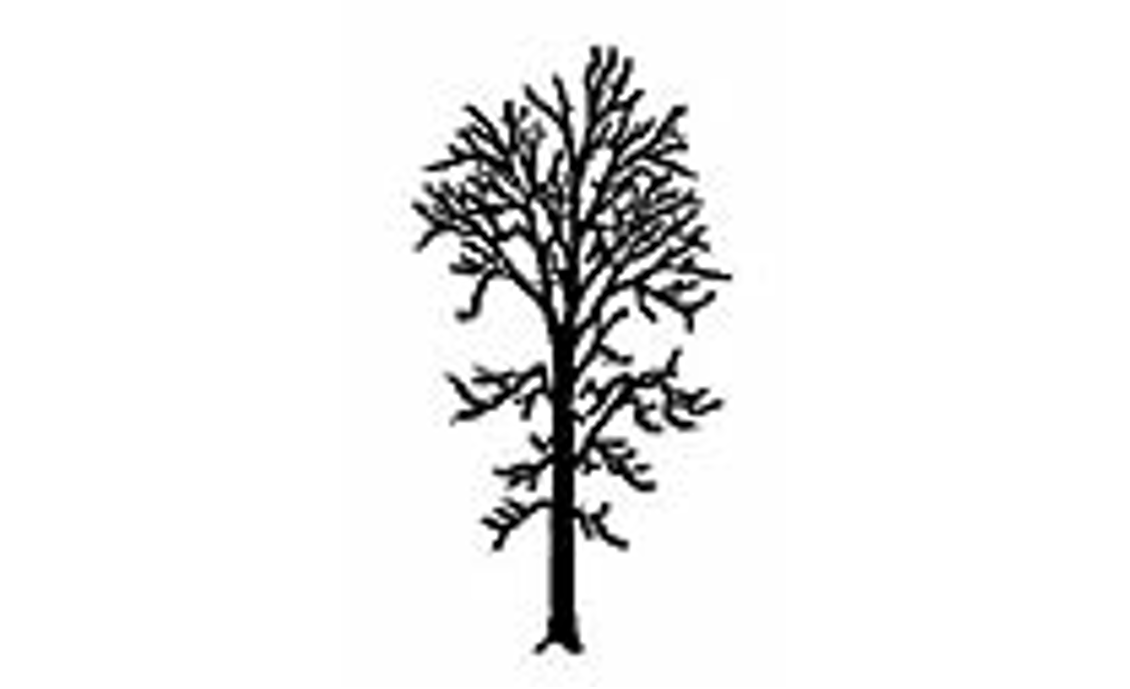Alaska birch
Alaska birch (Ea) - Betula neoalaskana
Alaska birch is usually a tall shrub, less often, a medium-sized (<20m) deciduous broad-leaved tree, at maturity with a narrow, oval crown, slender, often curved stem, and creamy white or slightly pinkish bark.
On this page
- Geographic range and ecological amplitudes
- Tolerances and damaging agents
- Silvical characteristics
- Genetics and notes
Geographic range and ecological amplitudes
Geographic range
Geographic element:
Western North American/Cordilleran and northern Central
Distribution in Western North America:
north and central in the Cordilleran region
Ecological amplitudes
Climatic amplitude:
subarctic - (subalpine boreal) - montane boreal
Orographic amplitude:
montane - (subalpine)
Occurrence in biogeoclimatic zones:
(lower SWB), BWBS
Edaphic amplitude

Range of soil moisture regimes:
(fresh) - moist - very moist - wet
Range of soil nutrient regimes:
very poor - poor - medium; oxylophyte
Tolerances and damaging agents
Root system characteristics
Alaska birch, a wetland species, is shallow-rooted without a taproot. Roots are associated with ecto- and endo-mycorrhizae.
| Tolerance to | Tolerance class | Comments |
|---|---|---|
| low light | M | may regenerate in open canopy stands |
| frost | H | grows in permafrost soils |
| heat | L | extreme heat is not a concern in boreal climates |
| water deficit | L | absent on water-deficient sites |
| water surplus | H | Tolerates wet sites and sites with a strongly fluctuating water table well |
| nutrient (mainly N) deficiency | H | Very frequent in acid, very poor soils |
Associated tree species and successional role
Alaska birch grows scattered with other species in ombotrophic, poorly drained sites and wetlands, especially with black spruce. It is present in early seral, mid-seral, and even in late seral stages (on wet sites) of secondary succession. As a moderately shade-tolerant tree, Alaska birch maintains its presence as a variable component of open-canopy edaphic climax communities in ombotrophic wetlands.
Genetics and notes
Notes
There are another three shrub birch species that occur frequently in interior British Columbia: shrub birch (Betula glandulosa Michx.), water birch (Betula occidentalis Hook.), and swamp birch (Betula pumila L.). All occur predominantly in boreal climates — shrub birch is an oxylophyte and diagnostic species for the SWB zone; water birch is a calciphyte represented mainly in subalpine boreal wetlands; and swamp birch is a component of montane boreal wetlands.
Alaska birch is not considered a timber crop species, however, it is a useful component of wetland subarctic and boreal ecosystems.


